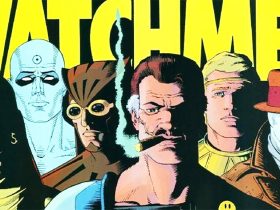Learn all essential facts about manga comic books
Manga enthusiasts appreciate the medium for its diverse storytelling, unique artistry, and the ability to explore a wide range of themes and genres.
Manga comic definition
Manga are comics and print cartoons. It is a Japanese word that literally translates as “whimsical pictures”. Manga is a style of comic books and graphic novels that originated in Japan. It is characterized by its distinctive artistic and storytelling techniques, and it covers a wide range of genres and themes.
While Westerners see comics as purely intended for children, the Japanese thinks otherwise.
In Japan, people of all ages read manga, making it a steady and major part of Japanese publishing, not to mention its increasing popularity worldwide.
Manga comprise a broad range of subjects; action, adventure, sports, romance, games, history, drama, comedy, science fiction, fantasy, mystery, horror, sexuality, business, and many others ranging from children’s to the more restricted story plots.
Japanese manga contains many stories typically done in black and white, although there are also full color manga. A manga artist or a managaka works with a few assistants in a small studio and is associated with a creative editor from a commercial publishing company.
History of Manga
Manga was first developed in Japan in the late 1900s and became widely popular in the 20th century after the laws that prohibit their publication were lifted.
The tradition of narrative art or telling stories with the use of sequential images has long been part of the Japanese culture.
Earliest forms of pre-manga artwork inspired and influenced the development of modern Japanese comics.
Historians and writers cite 2 broad and complementary processes that shaped today’s manga comics. Their views summed up to focus the importance on the role of cultural and historical events of World War II versus the role of pre-war Mejii and pre Meiji Japanese culture and art.
The first manga magazine Eshinbun Nipponchi, was created by Kanagaki Robun and Kawanabe Kyosai in 1984.
Key features of Manga include
- Right-to-Left Reading: Unlike Western comics, manga is traditionally read from right to left, starting from the top right corner and ending in the bottom left corner. This also means that the panels and speech bubbles are arranged in a way that accommodates this reading direction.
- Artistic Style: Manga artists use a wide variety of artistic styles and techniques, but there are some common characteristics, such as large, expressive eyes, detailed backgrounds, and a focus on facial expressions to convey emotions.
- Diverse Themes: Manga covers a broad spectrum of themes, catering to different tastes and demographics. Shonen manga is typically aimed at young boys and often features action and adventure, while shojo manga targets young girls and focuses on romance and relationships. Seinen manga is intended for adult men and may explore more mature and complex themes, and josei manga targets adult women.
- Serial Publication: Many manga are first serialized in magazines before they are compiled into volumes or tankobon. This serialization allows creators to build a fanbase and receive feedback from readers as they develop the story.
- Variety of Formats: Manga can come in various formats, from single-volume one-shots to long-running series that span multiple volumes.
- Influence on Anime: Manga often serves as the source material for anime series and films. Many popular anime series are adapted from manga, and the two mediums often cross-promote each other.
Best Manga comics
Manga was first developed in Japan in the late 1900s and became widely popular in the 20th century after the laws that prohibit their publication were lifted.
The tradition of narrative art or telling stories with the use of sequential images has long been part of the Japanese culture.
Earliest forms of pre-manga artwork inspired and influenced the development of modern Japanese comics.
Historians and writers cite 2 broad and complementary processes that shaped today’s manga comics. Their views summed up to focus the importance on the role of cultural and historical events of World War II versus the role of pre-war Mejii and pre Meiji Japanese culture and art.
The first manga magazine Eshinbun Nipponchi, was created by Kanagaki Robun and Kawanabe Kyosai in 1984.
Best Manga comics
• Naruto – an ongoing Japanese manga that follows the story of Naruo Uzumaki, a young ninja who aspires to be a Hokage.
Written and illustrated by Masashi Kishimoto, Naruto is among today’s famous Japanese manga, spanning to several other media; video games, tv series and films.
• Full Metal Alchemist – a story of 2 alchemist brother, Edward and Alphonse Elric in search for a legendary catalyst, the Philosopher’s Stone.
Written and illustrated by Hiromu Arakawa, this Japanese manga spanned a multitude of merchandise making it one of the most popular serialized manga worldwide.
Value of manga comic books
Like most comic collectibles, manga comic books serve as priced additions to a comic collection. Many comic collectors are willing to pay hefty sums for a classic and rare manga issue.
A manga comics value takes in important considerations that determines its price and worth; condition, age, creator, and popularity among others.
Comic book grading and appraisal would be helpful if you want to know the worth of your manga. Just make sure to have it graded by trusted comic graders or learn how to pre-asses your Japanese comics to save time and money.
However, the worth of Japanese comics is truly determined depending on how much a collector or a buyer is willing to pay for it.











Leave a Reply